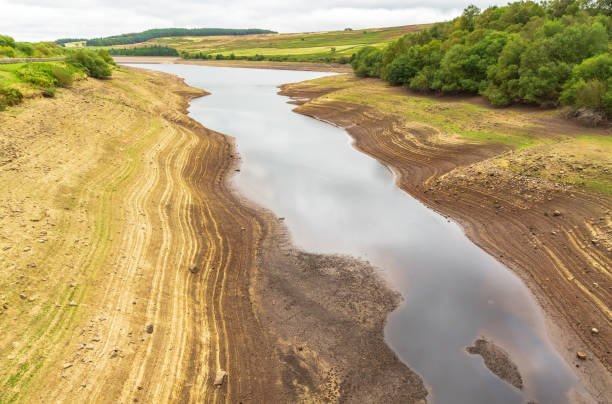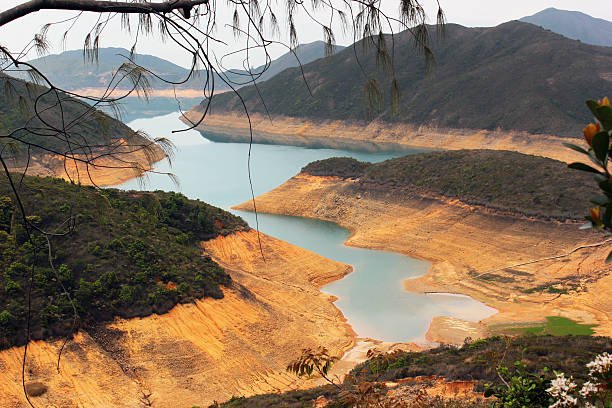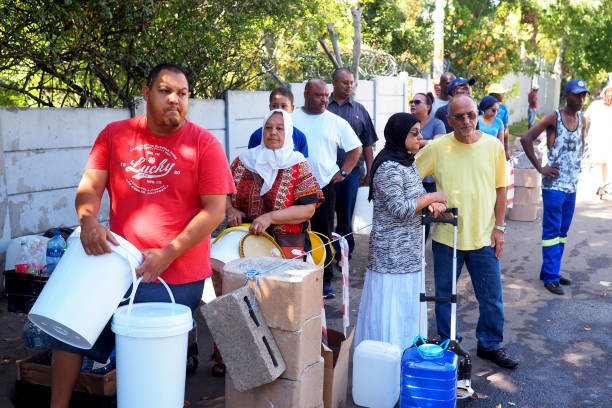JOIN OUR WHATSAPP GROUP. CLICK HERE
Pictures of the Different Types of Droughts Images of the Various Drought Types: Natural disasters known as droughts are defined by a protracted period of low rainfall that results in a water deficit. They exist in almost every climatic zone, although their traits and effects might differ greatly from one place to another. Droughts can have detrimental effects on the environment, society, and the economy. They can cause crop failure, a lack of water supply, and resultant food instability. They can also increase wildlife death, harm aquatic ecosystems, and even cause societal upheaval.
Four categories of droughts are commonly recognized: meteorological, agricultural, hydrological, and socioeconomic. The cause and effect of each category describe it. Reduced precipitation over time causes meteorological droughts. Agricultural droughts occur when there is not enough precipitation for the growth of crops or range. Reduced water supplies in sources including reservoirs, aquifers, and rivers are a hallmark of hydrological droughts. Last but not least, socioeconomic droughts happen when there is a water shortage during a time of bad weather.
For managing water resources, planning for and minimizing the effects of these natural disasters, it is essential to understand these types of droughts. Studying droughts and creating plans for coping with and recovering from them are becoming more crucial as climate change advances.
Pictures of the Different Types of Droughts
Droughts can generally be divided into four main types:
Meteorological Drought:

This type of drought refers to a period with below-average precipitation. Meteorological drought is usually the initial drought to occur and can be specific to certain regions as the amount of “normal” precipitation can vary between different areas. For instance, a few weeks without rain might be considered a drought in a tropical rainforest, but the same wouldn’t be true in a desert.
Agricultural Drought:

This type of drought happens when there’s not enough moisture for average crop or range production. This could be due to a lack of rainfall or conditions that cause rapid evaporation of water, such as high temperatures and winds. Agricultural droughts are of significant concern to farmers and can lead to a decrease in food production and increased prices.
Hydrological Drought:

This type of drought is related to the effects of periods of precipitation shortages on water supply. This could be seen in lower levels in reservoirs, lakes, and rivers, as well as decreased groundwater levels. Hydrological droughts are often seen after many months of meteorological drought.
Socioeconomic Drought:

This type of drought associates the supply and demand of economic goods with elements of meteorological, agricultural, and hydrological drought. It happens when the demand for an economic good exceeds supply as a result of a weather-related shortfall in water supply.
Examples of Socioeconomic Drought in Cape Town
Socioeconomic drought occurs when the demand for water exceeds the available supply during a period of adverse weather conditions. This type of drought has direct impacts on the production and availability of goods and services in society. Here’s an example from South Africa:
The Cape Town Water Crisis (2015-2018) in South Africa is an example of a socioeconomic drought. Cape Town, one of the most populated cities in South Africa, faced a severe water shortage due to three consecutive years of drought, which is considered to be a once-in-300-years event.
The city’s reservoirs fell to critical levels, leading to strict water rationing measures. At the height of the crisis, each city resident was limited to 50 liters of water per day (for comparison, the average American uses about 330 liters per day). This water was to be used for drinking, cooking, washing, and all other daily needs.
The impact of this drought extended beyond just the availability of water for consumption. Agriculture was severely affected, which led to a significant loss of jobs in a region where employment is largely tied to farming. The tourism industry, a major economic driver in Cape Town, was also impacted as potential tourists were deterred by the water crisis.
This crisis highlighted the importance of sustainable water management strategies and the need to prepare for potential future droughts due to climate change. Cape Town has since made significant changes to its water management policies, including increasing the price of water, investing in new water sources such as desalination and recycling, and implementing public education campaigns about water conservation.
Remember, these types of droughts are interconnected. Meteorological drought can lead to agricultural and hydrological droughts, and all three can contribute to socioeconomic drought. Furthermore, the impacts of drought can be exacerbated by human activities such as excessive water usage, poor land management, and climate change.
How to Pass Geography Grade 11 with distinctions
One of the most significant accomplishments in your academic career is passing matric. It provides access to a wide range of post secondary options and employment possibilities. Use our best study advice to complete your matriculation, and you’ll succeed with flying colors.
READ => How to get your matric results step by step
- Attend class
- Ask questions
- Make notes
- Study
- Practice
- Study groups
- Extra class
- Motivation
- Complete assessments
- Prepare for the Exams in due time
Download Past Exam Papers & Memo per Province
- Department of Basic Education Grade 9 Exams
- Eastern Cape Papers and Memorandum
- Free State Papers and Memorandum
- Gauteng Papers and Memorandum
- KwaZulu-Natal Papers and Memorandum
- Limpopo Papers and Memorandum
- Mpumalanga Papers and Memorandum
- Northern Cape Papers and Memorandum
- North West Papers and Memorandum
- Western Cape Papers and Memorandum
To Receive Quick Updates Join our Social Media Platforms
Telegram Channel https://t.me/Ajiraforumsouthafrica
WhatsApp Group:https://chat.whatsapp.com/FqxNrkBVlqv0jprAM5kZwt
LinkedIn : https://www.linkedin.com/in/ajira-forum-7a254597/
Facebook Page : https://www.facebook.com/profile.php?id=100063704404668
twitter : https://twitter.com/Ajiraforums
Instagram: https://www.instagram.com/ajiraforum_/
Pinterest: https://in.pinterest.com/AJIRAFORUM/
JOIN OUR TELEGRAM CHANNEL. CLICK HERE

Be the first to comment